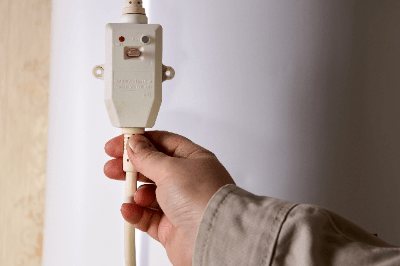What Is Wear Resistant Rubber?
Wear resistant rubber is a rubber material that is highly resistant to friction and abrasion.
It is used in environments and applications where abrasion due to friction and abrasion occurs. Its high resistance to abrasion allows it to be used for long periods of time. This reduces the frequency of replacement and maintenance, thus saving costs.
They also maintain their performance under intense friction and harsh environments, with little degradation. However, despite its durability, certain environmental conditions may cause deterioration and loss of effectiveness.
Proper material selection and appropriate protection are necessary when exposed to chemicals and extreme temperatures. Prolonged contact with oil can also degrade performance, so care should be taken.
Uses of Wear Resistant Rubber
Wear resistant rubber is used in a variety of applications. The following are typical applications:
1. Vehicles
Wear resistant rubber is widely used in the automotive industry. Tires, in particular, are a type of wear resistant rubber that can be used for long periods of time while withstanding friction with the road. It is also used in various mechanical parts such as engine mounts and brake pads.
Wear resistant rubber is also used in railroad vehicles and equipment. The high electrical insulating properties of rubber make it ideal for use as rail insulation and cushioning material. It protects rolling stock and rails from vibration and friction.
In addition, it is often used for roller coaster tires.
2. Mining and Construction Industries
In the mining and construction industries, wear resistant rubber is an important material. It is used in equipment such as conveyor belts and chute liners.
In the mining industry, it is often used to transport ore, and in construction, it is used to transport earth and sand. Because of its durability to withstand the transport of ores and construction materials, it is widely used in conveying equipment.
3. Industrial Machinery
Wear resistant rubber is often used in industrial machinery and machine parts. Wear resistant rubber is used for parts that continue to be used for long periods of time, such as gaskets, and for parts that frequently come in contact with hard substances (such as metal), such as robot hand jaws. It improves durability while controlling lubrication and friction.
Principle of Wear Resistant Rubber
Wear resistant rubber is a special rubber material that is generally highly resistant to friction and abrasion. Because of its elasticity, rubber can be deformed by external forces or friction and then return to its original shape. This elasticity provides resistance to abrasion.
However, substances called wear resistant agents are added to wear resistant rubber. Abrasion resistant agents are materials that impart effective physical properties against friction, carbon black being one example. Carbon black not only improves the strength and wear resistance of rubber but also helps reduce friction and wear.
Wear resistant rubber formulations are optimized to maximize wear resistance. The type of rubber material and wear resistant rubber, the amount added, and the ratio of wear resistant agents are often adjusted. Manufacturing processes are also optimized to maximize the properties of the rubber.
Various base materials are available, including those made of styrene-butadiene rubber and urethane rubber.
The basic physical properties and characteristics are the same as those of regular rubber, with wear resistant rubber having superior mechanical strength. In addition, as with other rubber products, processing and molding are easy.
How to Select Wear Resistant Rubber
When selecting wear resistant rubber, consider the application, wear resistance, stress, and other factors.
1. Intended Use
First, it is necessary to understand the requirements of the intended use clearly. It is important to select appropriate wear resistant rubber characteristics by considering factors such as the degree of wear, working environment, temperature, and pressure.
2. Frictional Wear Performance
The wear resistant performance of wear resistant rubber may vary. Since different types and grades of wear resistant rubber have different performance, it is necessary to select the appropriate rubber material to meet the wear resistance requirements.
3. Resistance to Stress
Resistance of rubber materials to stress must also be considered. The durability of wear resistant rubber is maximized within the appropriate stress and load ranges. By selecting a product with optimum stress, wear resistant rubber can be extended in service life.

